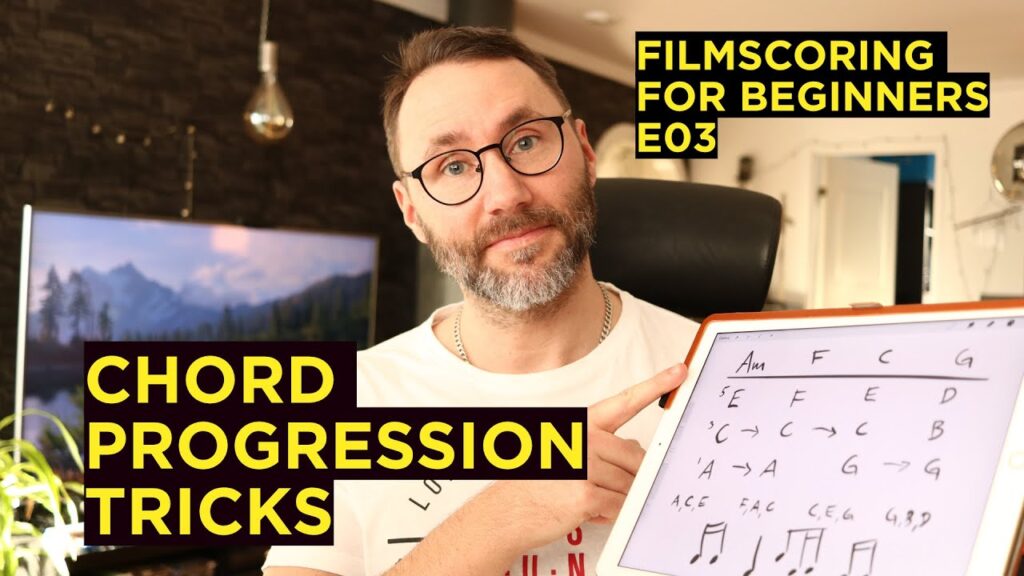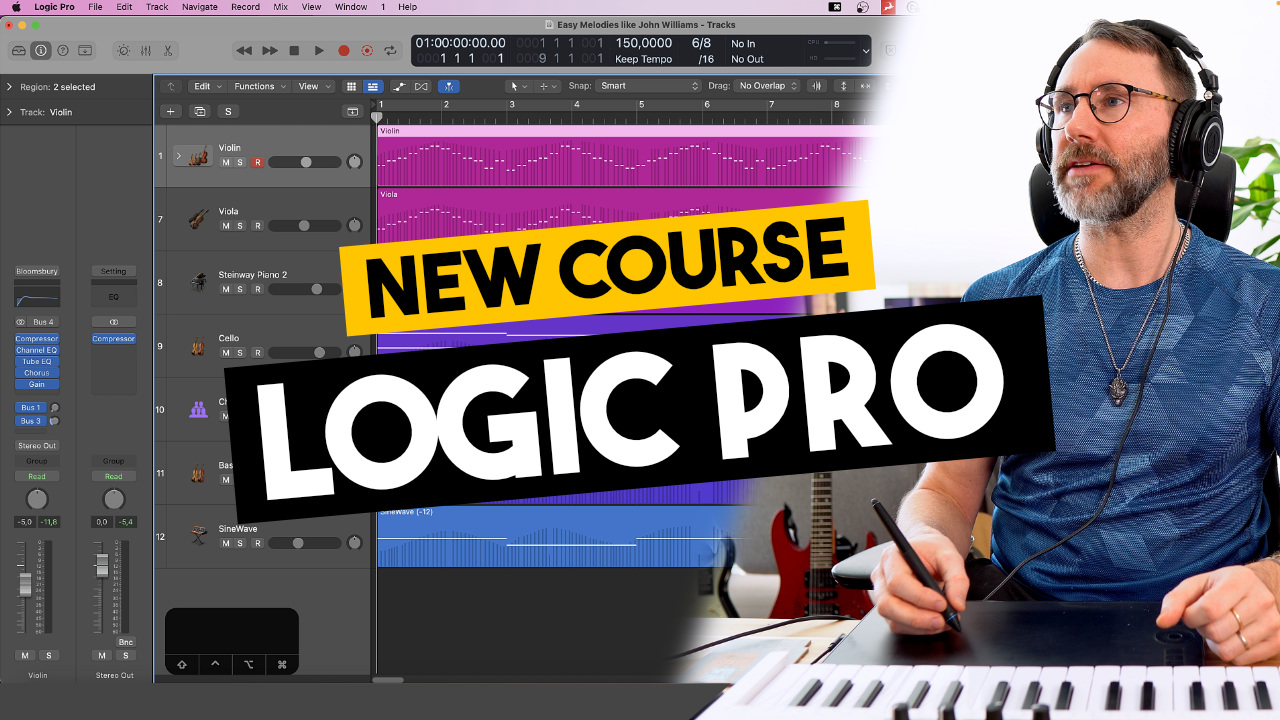Music Theory Everyone Should Know. Today I want to talk about the foundation to get some smooth sounding chord progressions. Importantly we will talk about voice leading and chord inversions.
Furthermore, we look at how to add color to the chords. We give those simple triads flavour and impact. All is explained in the chord progression video tutorial.
Music Theory Everyone Should Know!
Everyone know how to play the chords in root position. It’s a great place to start in music theory, and to get to know how chords are constructed. After learning the major and minor triads it’s time to construct chord progressions.
Say, we choose to work with a chord progression like Am – F – C – G. Pretty basic in root-position right!?
Smoothen the transition between the notes with some music theory
When you want to improve a chord progression into sounding more natural and smooth. Especially when played with the instruments. We need to move some notes so we get a smaller jump and distance between each note between any two chords.
The music theory concept isn’t really that hard. We can make use of something called chord inversions to smoothen the distance between those chord notes. You can also get more information on voice leading in this article.
Chord inversions in music theory
A triad chord can basically be played in three variations depending on how you construct the chord.
Root position
Say we work with a A minor chord. The notes are from bottom to top.
A – C# and E – root position of A minor chord.
1:st inversion
Let’s move that root note A an octave up so we have the C# at the bottom. this is called 1:st inversion.
C# – E – A – 1:st inversion of A minor chord.
2:nd inversion
In the 2:nd inversion we move that C# up an octave so we now have:
E – A – C# – 2:nd inversion of A minor chord.
That’s all you need to know.
Inverting chords makes the chord progressions easier to play
I highly recommend you practise your chords and chord progressions in various inversions to get a feel for where you get the least amount of movement between the notes. This will make the chord progressions so much easier to play!
Chord extensions
Ok, so you want more flavour to your chords?
To add more color to the chords we can add extensions.
Our initial chord progression was:
Am – F – C – G
We can add additional notes to those chords to get a more classical, jazzy or poppy vibe.
Am7 – Fmaj7, Cadd9 to Gadd9 is a possible progression which will sound more juicy.
With one additional note per chord we change the flavour.
Let’s add some more colors and take the chords to something like:
Am11 – F9 – C9 – Gadd9add11
Am11 includes both the 7:th note, a 9:th note AND a 11:th note (it’s like a sus4).
F9 includes both the 7:th note AND the additional 9-note.
I hope these tips will get you started in experimenting with chord extensions to breathe more flavour into your music.
A little color in the chords goes a long way!
It’s not always relevant to include deep extensions to the chords, but sometimes a little color goes a long way!
What gear I use in the studio? Check out the Resources Page.
Join my exclusive community: https://www.patreon.com/gelhein
Be sure to sign up to our newsletter for new exciting articles in design, music production and sound design.
















